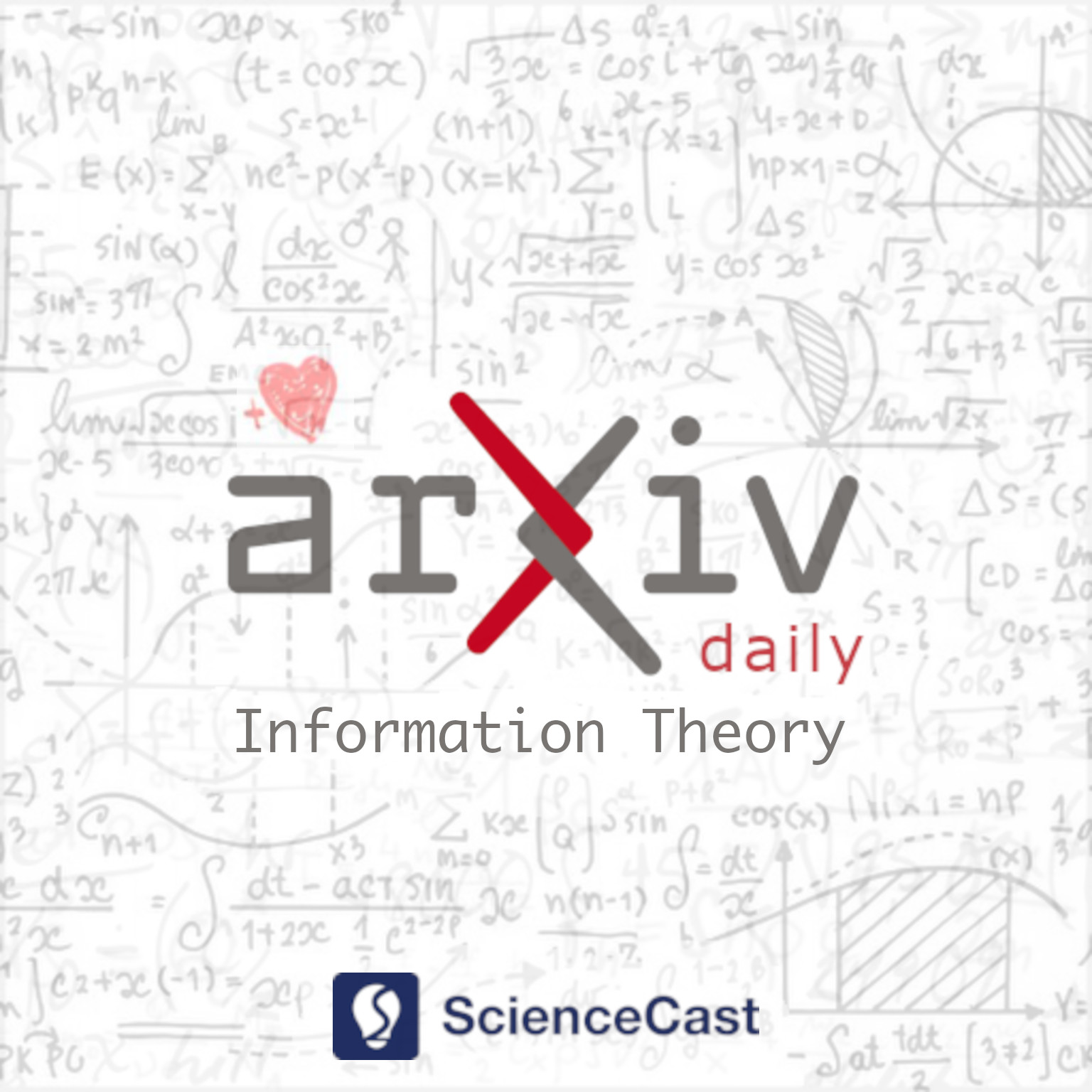
Information Theory (cs.IT)
Thu, 03 Aug 2023
1.Influences of some families of error-correcting codes
Authors:Hailey Egan, Jason T. LeGrow, Gretchen L. Matthews, Jeff Suliga
Abstract: Binary codes of length $n$ may be viewed as subsets of vertices of the Boolean hypercube $\{0,1\}^n$. The ability of a linear error-correcting code to recover erasures is connected to influences of particular monotone Boolean functions. These functions provide insight into the role that particular coordinates play in a code's erasure repair capability. In this paper, we consider directly the influences of coordinates of a code. We describe a family of codes, called codes with minimum disjoint support, for which all influences may be determined. As a consequence, we find influences of repetition codes and certain distinct weight codes. Computing influences is typically circumvented by appealing to the transitivity of the automorphism group of the code. Some of the codes considered here fail to meet the transitivity conditions requires for these standard approaches, yet we can compute them directly.
2.Multi-Carrier Modulation: An Evolution from Time-Frequency Domain to Delay-Doppler Domain
Authors:Hai Lin, Jinhong Yuan, Wei Yu, Jingxian Wu, Lajos Hanzo
Abstract: The recently proposed orthogonal delay-Doppler division multiplexing (ODDM) modulation, which is based on the new delay-Doppler (DD) domain orthogonal pulse (DDOP), is studied. A substantial benefit of the DDOP-based ODDM or general delay-Doppler domain multi-carrier (DDMC) modulation is that it achieves orthogonality with respect to the fine time and frequency resolutions of the DD domain. We first revisit the family of wireless channel models conceived for linear time-varying (LTV) channels, and then review the conventional multi-carrier (MC) modulation schemes and their design guidelines for both linear time-invariant (LTI) and LTV channels. Then we discuss the time-varying property of the LTV channels' DD domain impulse response and propose an impulse function based transmission strategy for equivalent sampled DD domain (ESDD) channels. Next, we take an in-depth look into the DDOP and the corresponding ODDM modulation to unveil its unique input-output relation for transmission over ESDD channels. Then, we point out that the conventional MC modulation design guidelines based on the Wely-Heisenberg (WH) frame theory can be relaxed without compromising its orthogonality or without violating the WH frame theory. More specifically, for a communication system having given bandwidth and duration, MC modulation signals can be designed based on a WH subset associated with sufficient (bi)orthogonality, which governs the (bi)orthogonality of the MC signal within the bandwidth and duration. This novel design guideline could potentially open up opportunities for developing future waveforms required by new applications such as communication systems associated with high delay and/or Doppler shifts, as well as integrated sensing and communications, etc.